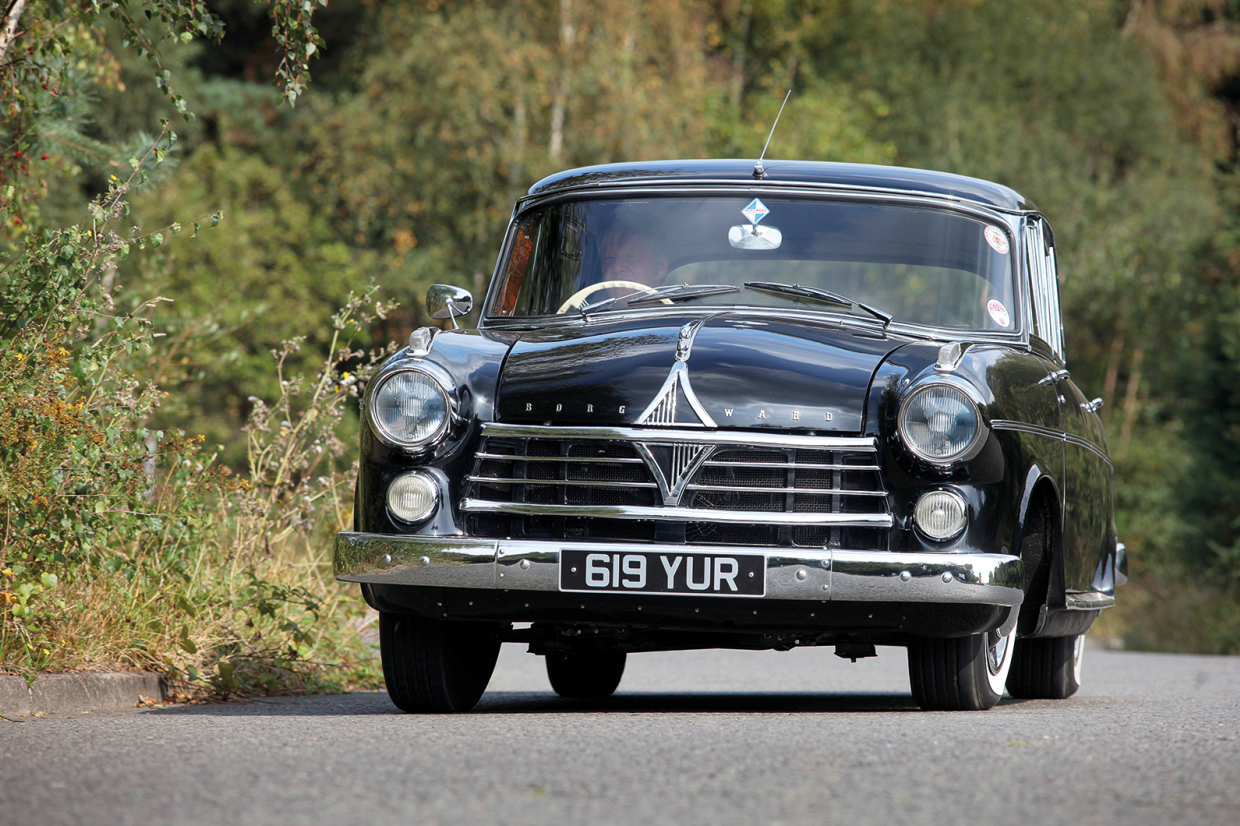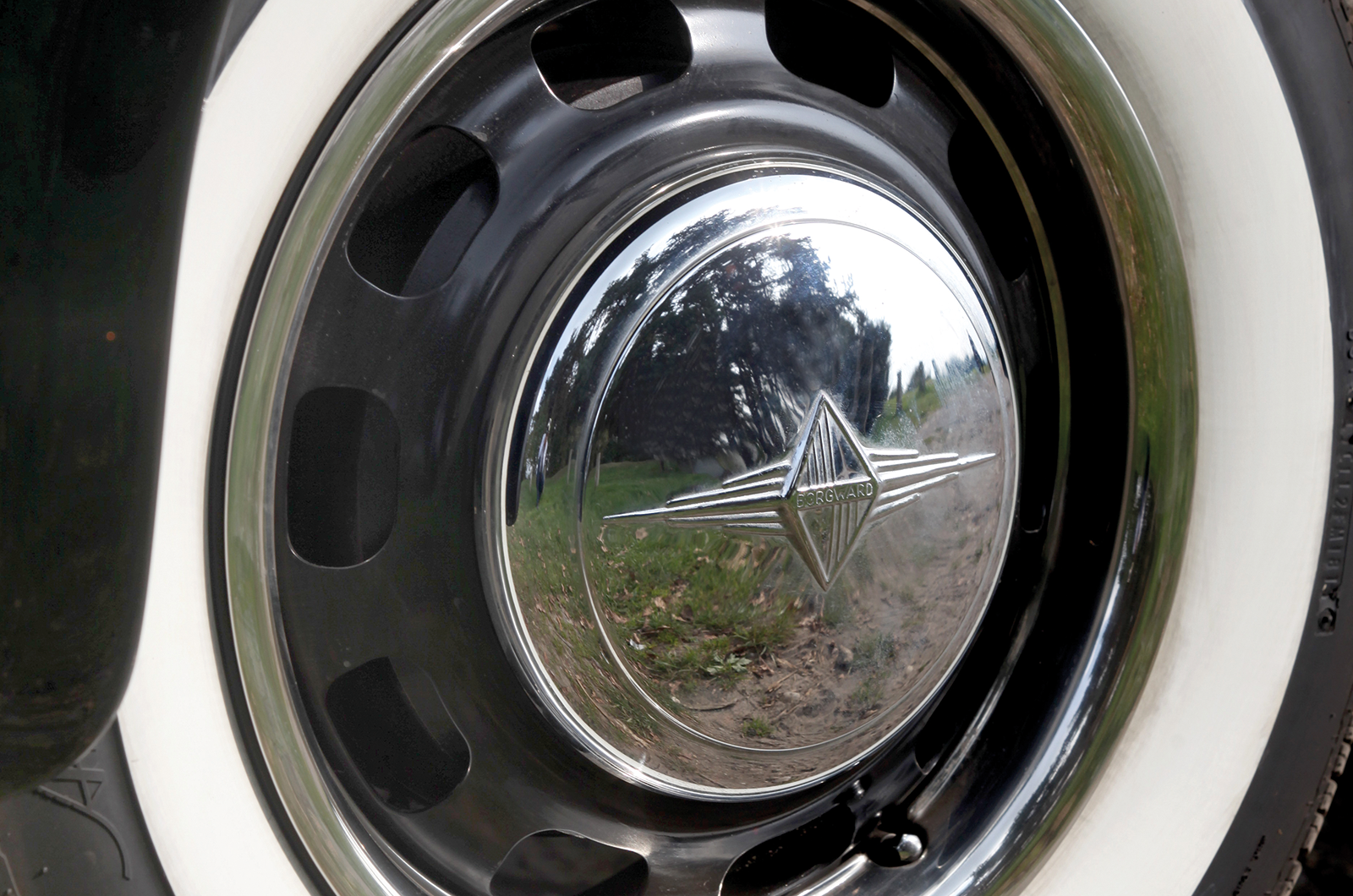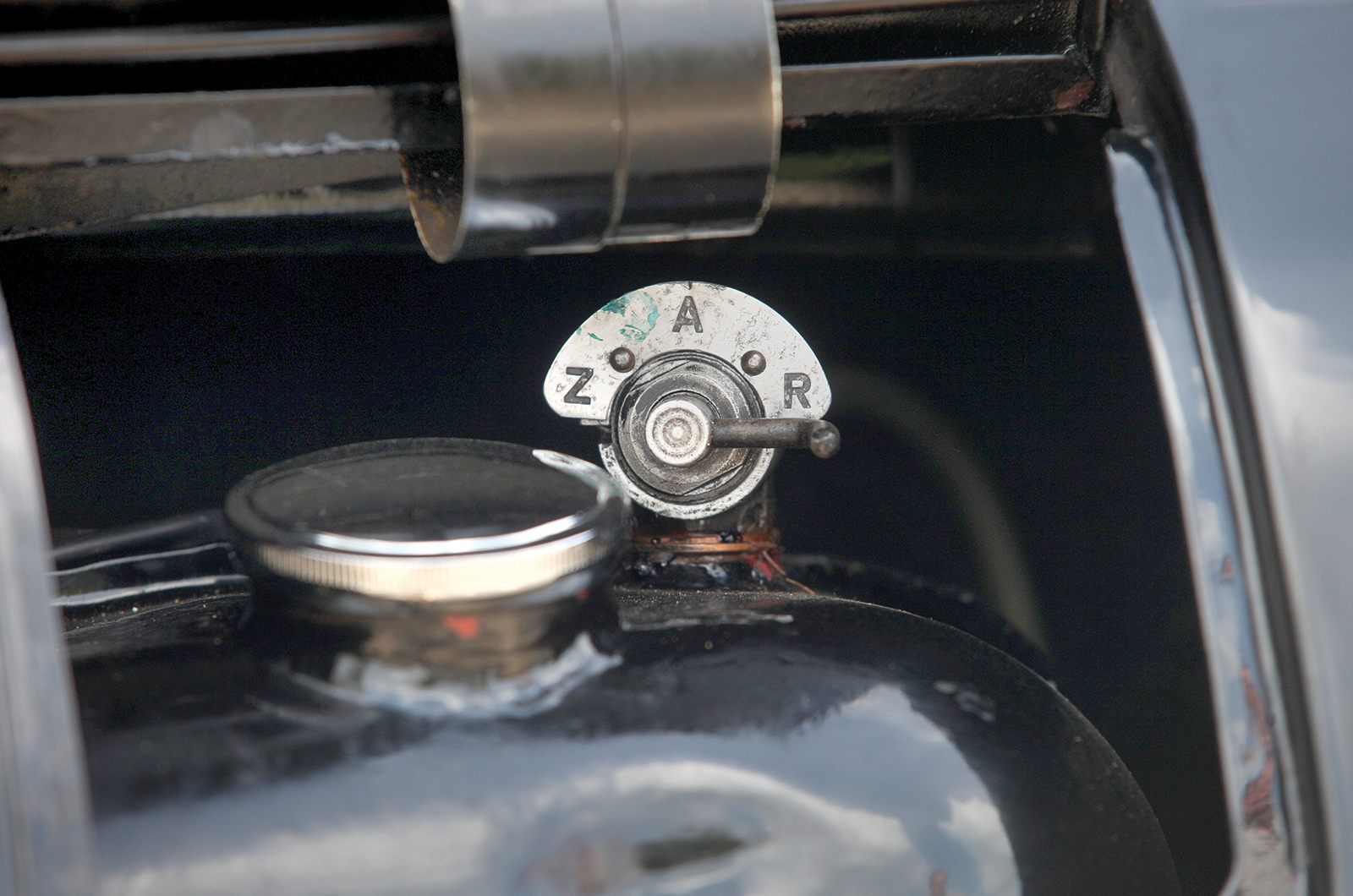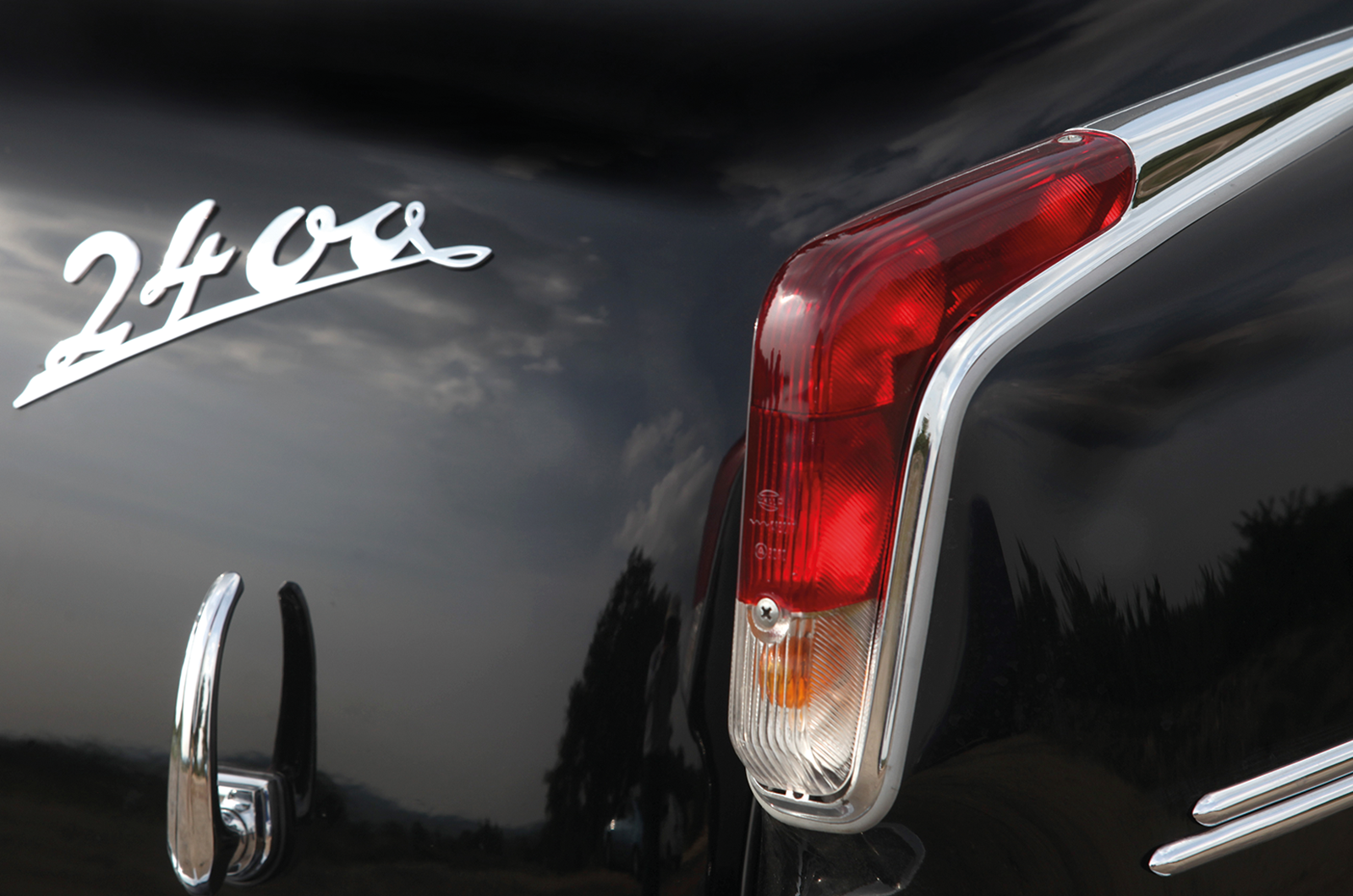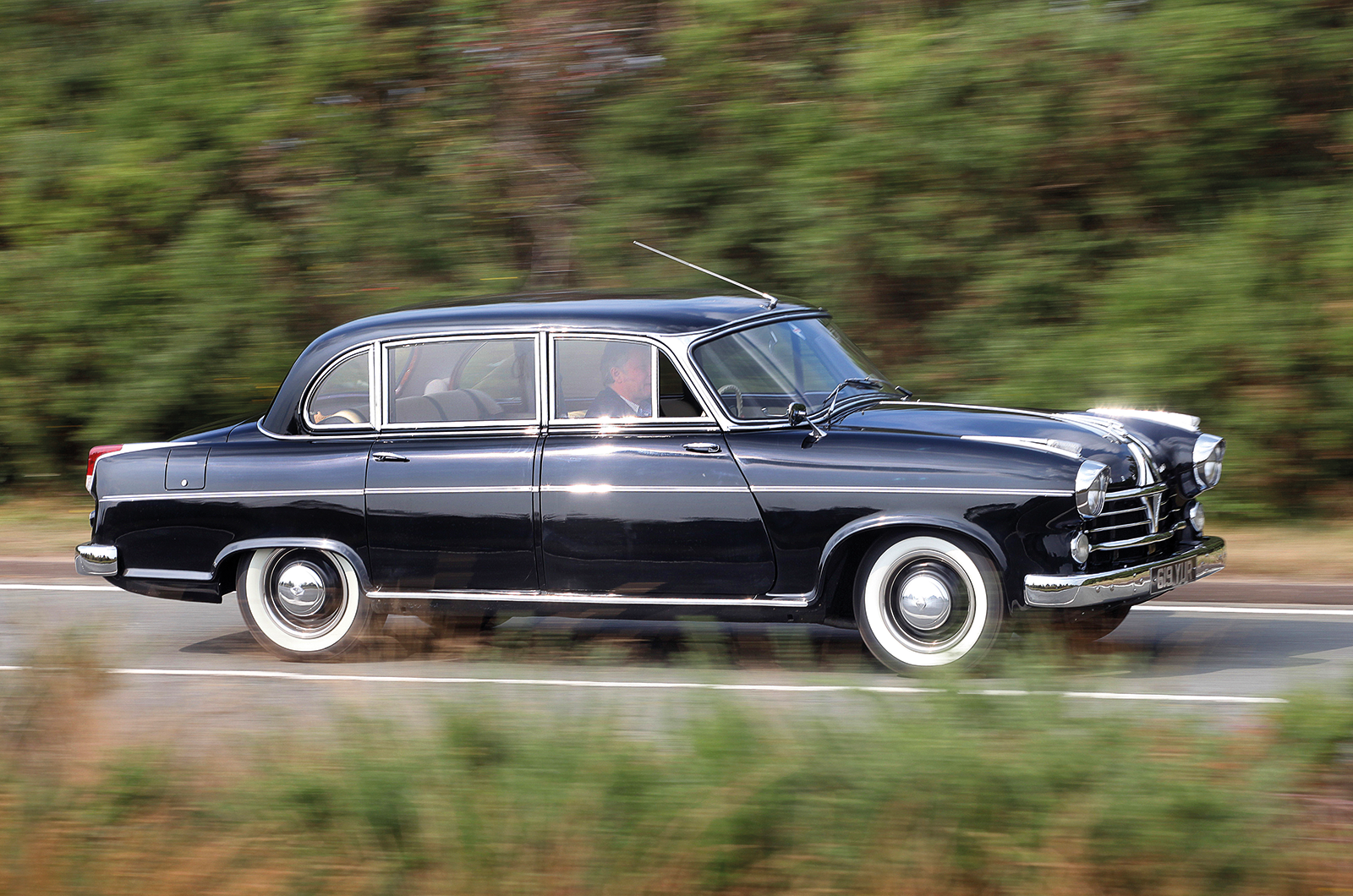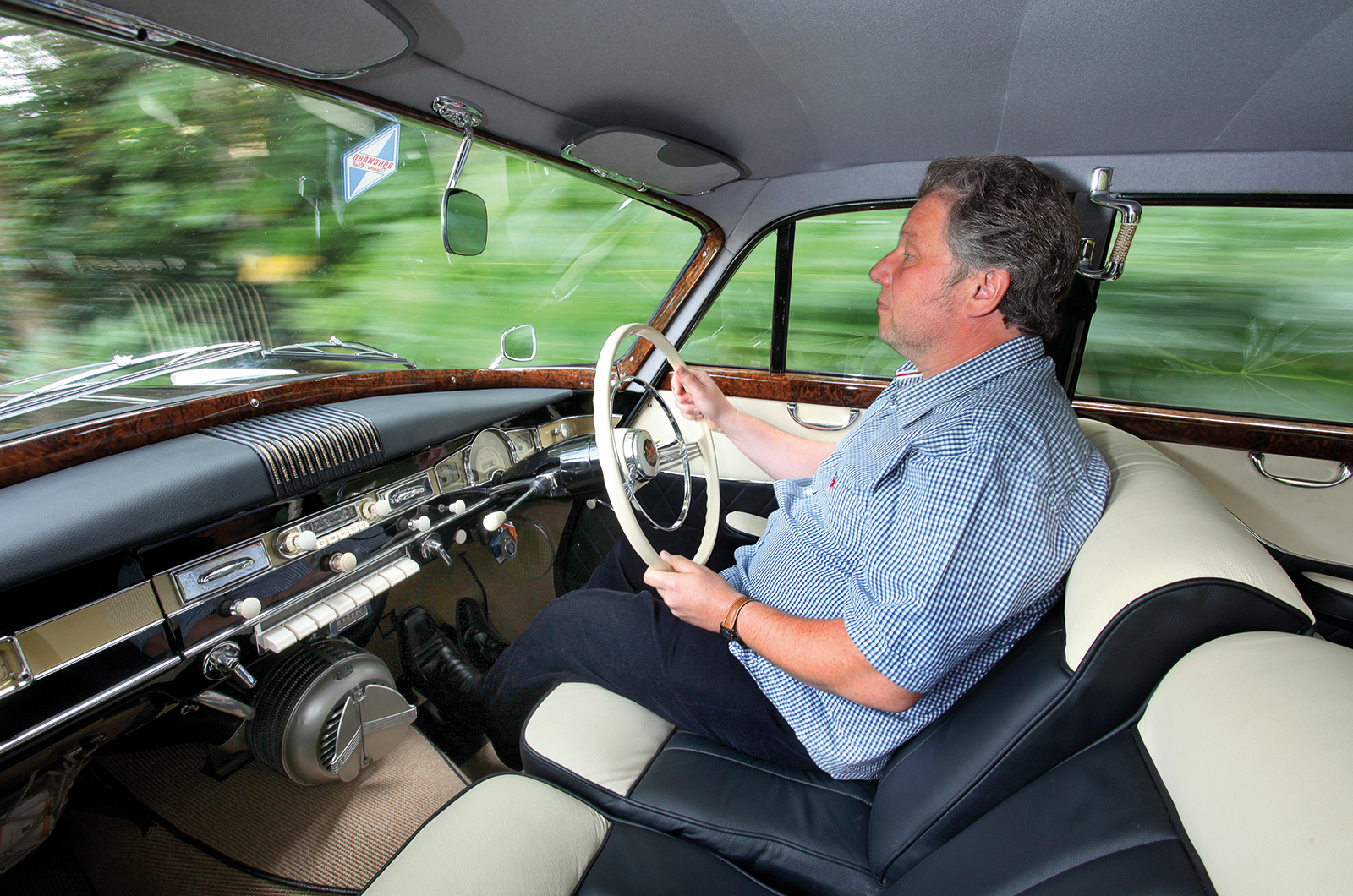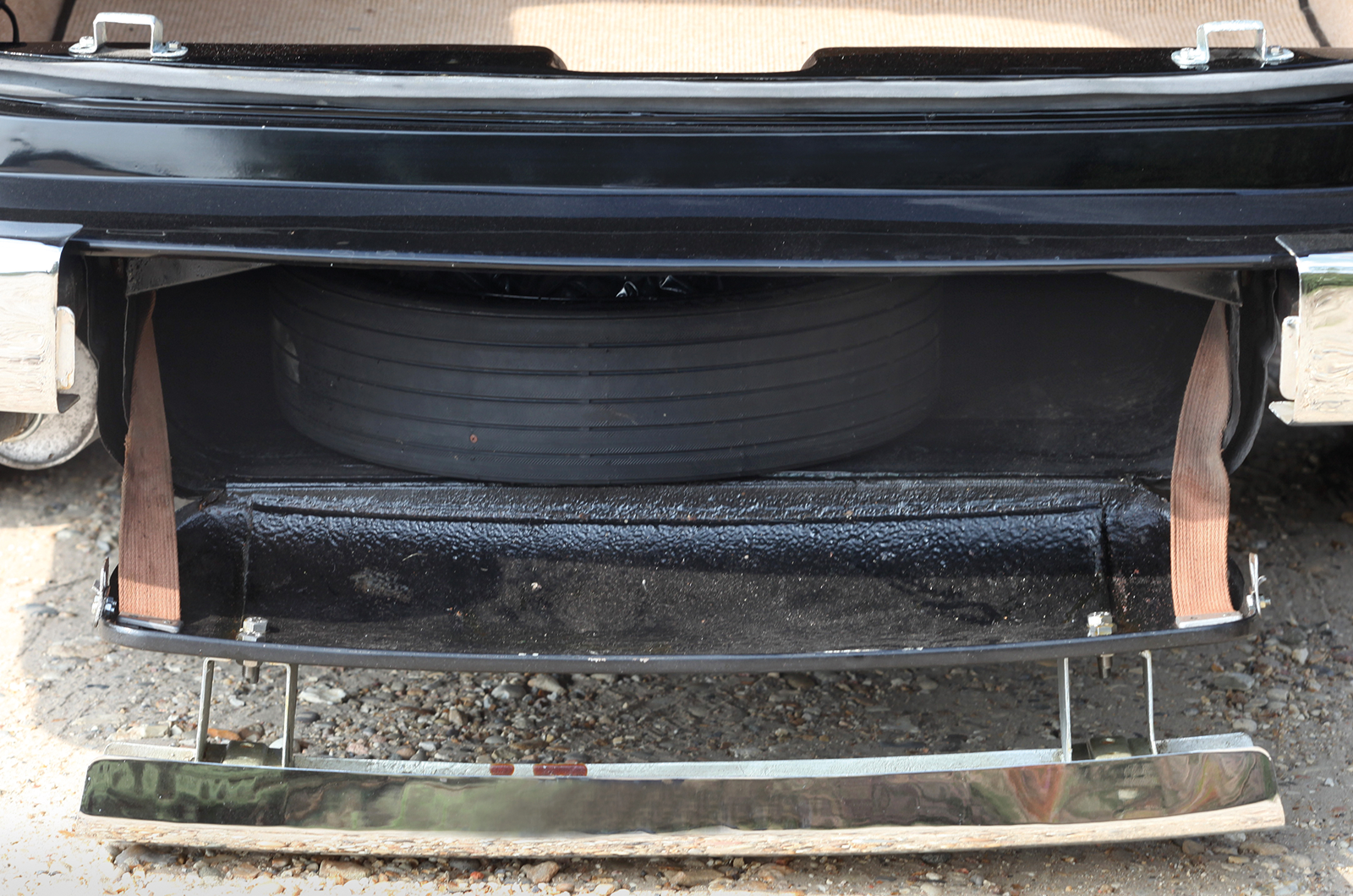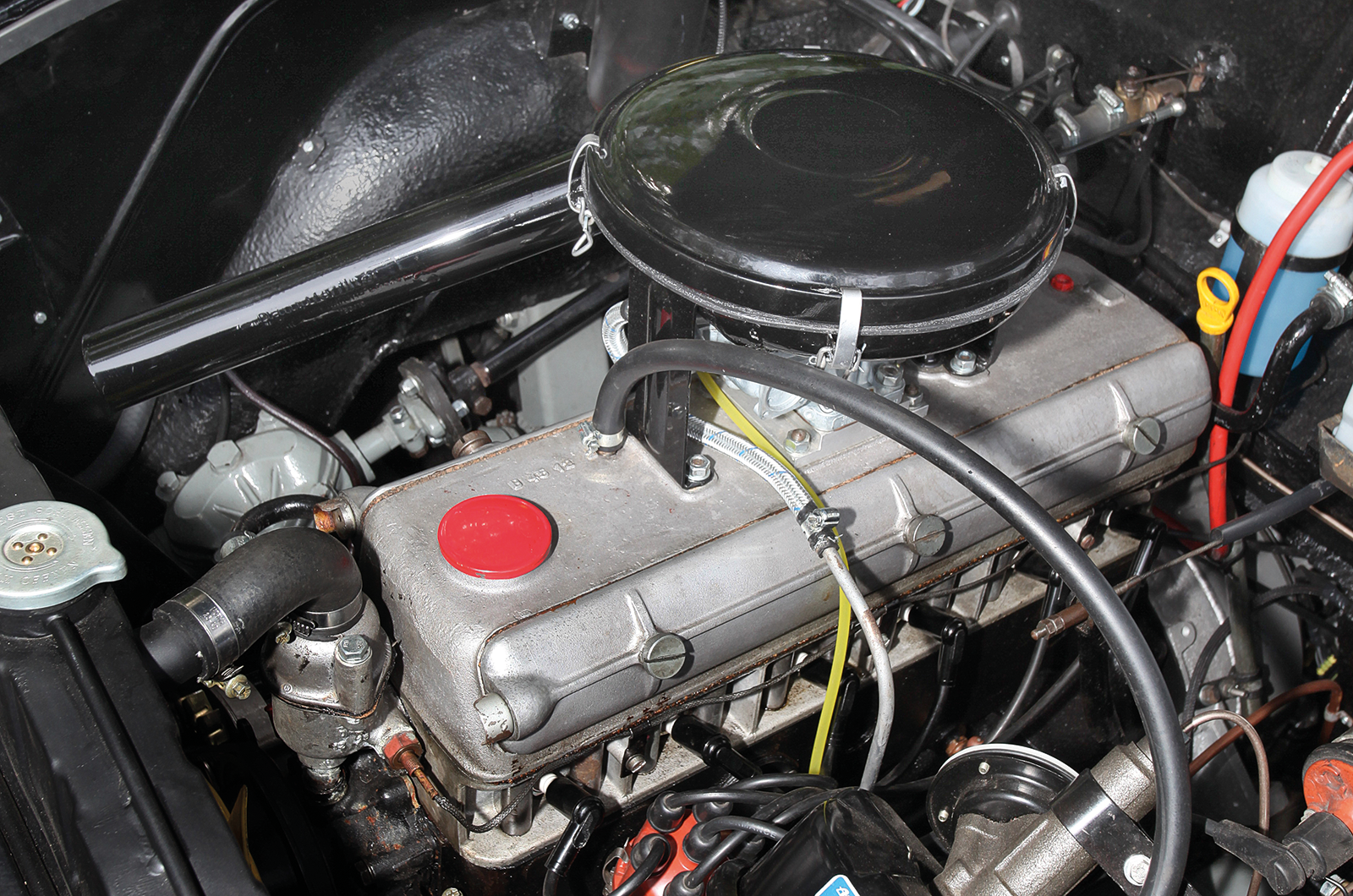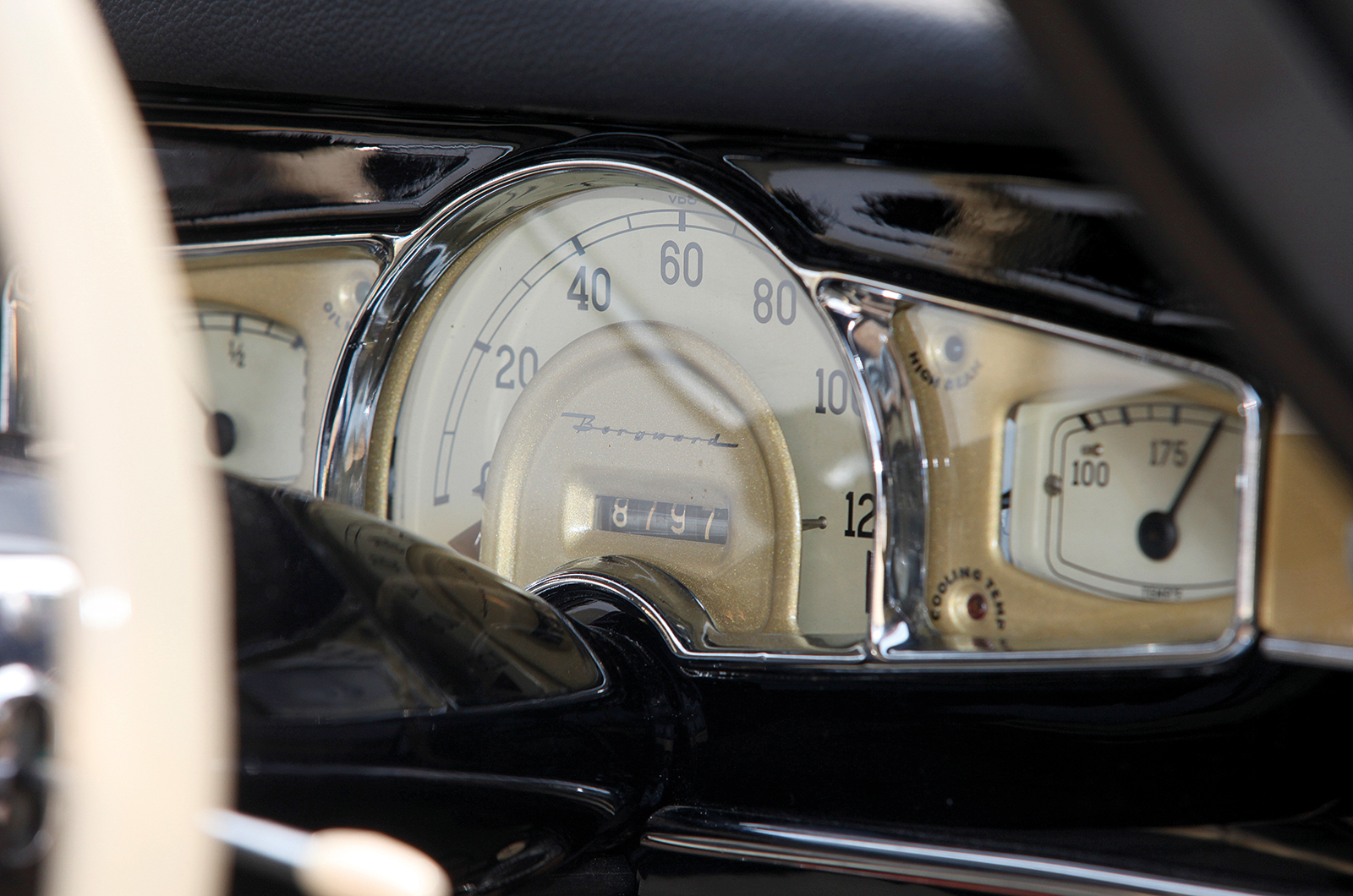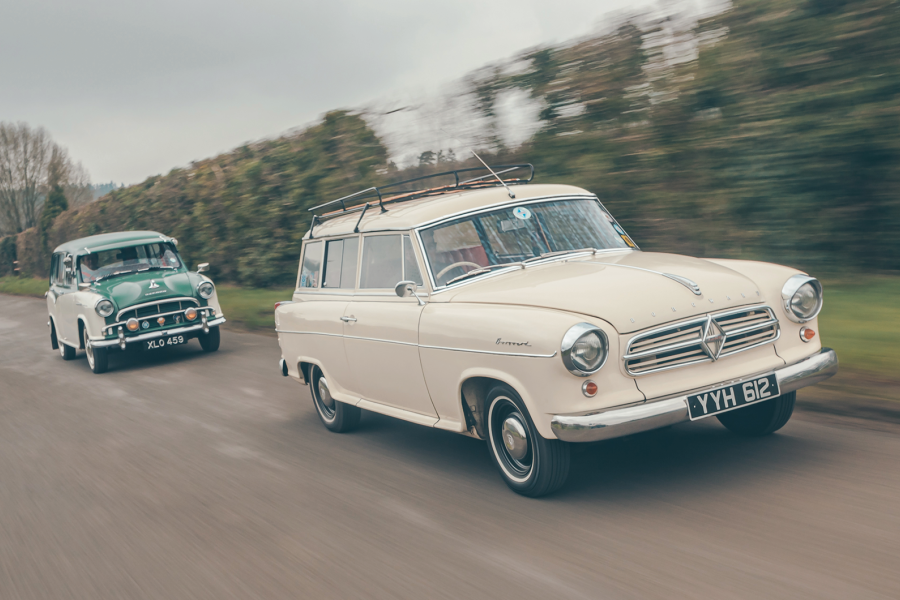What Borgward called his ‘pendulum’ rear suspension is actually a swing axle that levels poor surfaces with supple aplomb – but it does feel slightly odd when asked to do anything else, such as go round a corner.
“The axle is supported by bearings on the side of the differential,” explains Wallis, “but when you’re cornering they lock, so don’t allow the swing axle to operate correctly… It means the handling can feel interesting.”
It’s nothing approaching a problem, though. The basically understeering Pullman just rocks and shuffles uneasily on curves taken with anything close to enthusiasm, so you just tend to ease off.
At comparable speeds, the nifty handling of the lighter and better sorted Isabella (with similar suspension) would allow you to zip through.
Of course with only 100bhp to shift 3300lb, you have to pedal the Borgward quite hard to extract performance.
It makes willing noises and smooth unruffled progress – the figures show it is roughly as quick as a Bristol 401 – but Wallis has reconciled himself to the fact that the car is above all a great long-distance motorway cruiser (enhanced here by a four-speed ZF conversion, giving swift kickdown and higher gearing).
This car, the last Pullman II supplied and built in 1957, was born as a four-speed manual (with the same all-synchromesh ’box as the Isabella), but the automatic transmission is very much in the spirit of the car’s character – as is the unobtrusive electric power steering fitted during the rebuild.
Wallis resisted the temptation to fit disc brakes and, with its servo and twin leading shoes, it has no particular problems in that department.
The moody political and financial story behind Borgward’s 1961 bankruptcy has been discussed before; suffice to say that BMW prospered from Borgward’s demise in a market where the still popular Isabella had done most of the groundwork.
At the same time, Mercedes rid itself of a potential rival who had been irritating it with his big car ambitions for 10 years.
The Borgward Hansa 2400 Pullman’s styling has a distinctively Cold War flavour
How convenient. But was Carl Borgward really that hard done by? Should the world now be overrun by pushy executives driving behind the Bremen diamond rather than the double kidney of Munich?
Whatever the events of the early ’60s, here was a tycoon who was probably going to crash and burn anyway. A man who trusted his gut feelings rather than making healthy strategic decisions. Someone who didn’t plan or delegate very well, and who perhaps squandered his energies on too many hare-brained ego trips (including helicopters and fuel injection systems on baby cars), as well as working on small profit margins.
With just 1399 Grosse Borgwards built, we can assume that the company didn’t recover its tooling costs on its big cars, but the eponymous Dr Carl was unlikely to have been very concerned. He hardly advertised these six-cylinder models and sold them mostly to friends.
They were a harmless indulgence that delivered prestige value and gave the boss something to drive around in – even if he never made a single Deutschmark out of them.
Images: James Mann
This was originally in our January 2016 magazine; all information was correct at the date of original publication
READ MORE
Sun seekers: Mercedes-Benz 190SL, Porsche 356 and Borgward Isabella
Off the Rekord: forgotten Opels
Rotary club: Mazda Cosmo, NSU & Citroën
Martin Buckley
Senior Contributor, Classic & Sports Car
